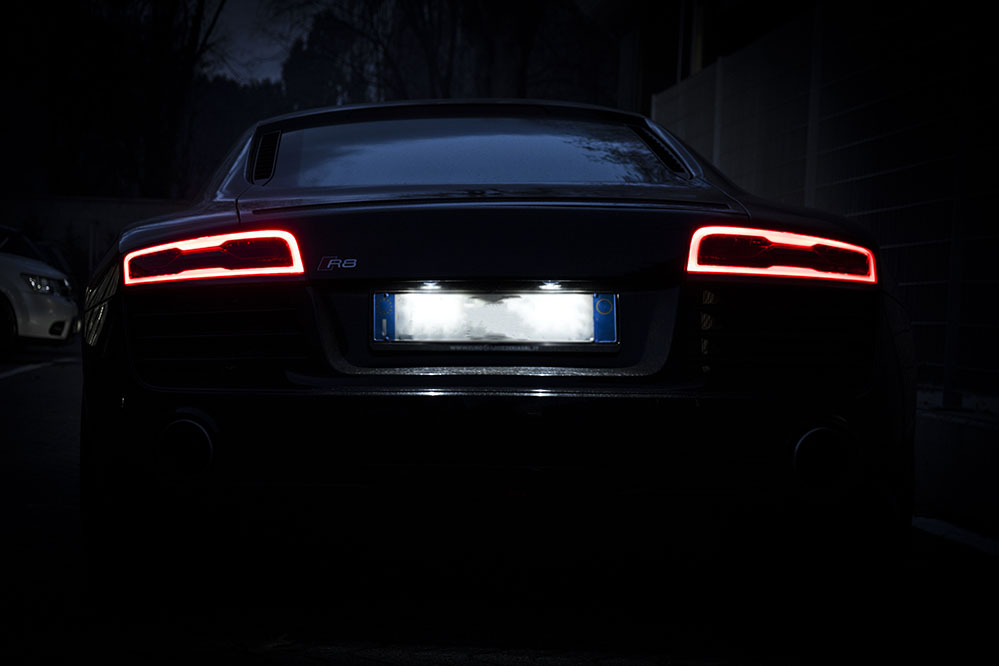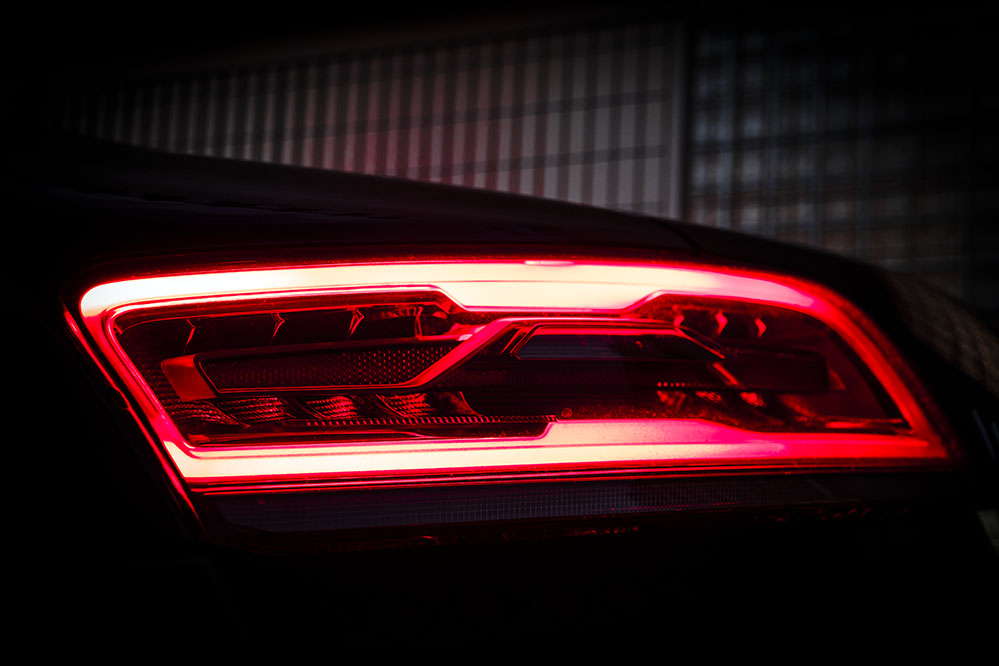A Supercar can always be more SUPER!
That's why Oreste chose to entrust us with his beautiful Audi R8 V8, a monster of 420cv!
Since it was an Audi R8 first series, it was equipped with Bi-Xenon headlights with LED daytime running lights, which were now outdated and with limited performances. Seen the normal deterioration of the lamps, together with the very expensive standard optical groups became opaque, it was time to do something!
Our "techie" team got down to work; that was the right opportunity to show off all our knowledge in the electronic field. Oreste purchased two new Audi Laser Matrix headlights (those installed as an optional on the latest generation of Audi R8) and we have started what, perhaps, to this day has been the most satisfying work of all.

Disassemble and scan
First of all we have completely disassembled the old Bi-Xenon headlights; we invested about 2 days to study its functioning and to create an electrical scheme, which would later be used as a sample for the functioning of the new optical groups.
We then (gently, very gently) started to open and completely disassemble the new Audi Laser Matrix headlights, which cost as much as a new hatchback; a procedure that required several dozen latex gloves and litres of sweat.
A few days later, finally, we found lying on the table about 100 meters of cables, almost 1kg (really) of screws and one of the most complex headlights ever seen before.
It took almost two weeks of Reverse Engineering to create an electrical scheme, find a way to make these Super Headlights work, to calculate every electronic detail and to finish the first drafts.

How are Laser headlights made?
The Laser Matrix headlights are equipped with 6 different high power LED arrays, each of them performing a specific task:
- Low beam with side movement Laser projector
- High beam with 2 reflector LEDs
- Corner light with 2 reflector LEDs
- Matrix LED for selective lightning with 6 reflectors LEDs
- Daytime running lights with 2 arrays in Guide-Light in PMMA
- Turning indicators in Guide-Light in PMMA
All of this was firmly mounted on a gigantic and very heavy heat sink-support equipped with 10 manual adjustments (internal, therefore accessible only once the headlight has been open) and a powerful tangential fan to cool the powerful low beam.
The most interesting thing is the complete lack of a motor for the automatic adjustment of the height, a sign that the light beams are designed in an excellent and efficient manner.

Once completed this long electronic conversion, we have reassembled and sealed the two optical groups of the Audi R8, adjusting the light beams of the Matrix LEDs so that they can be switched on together with the low beam.
Why? Unfortunately, the Matrix system is managed by the on-board computers of the Audi R8 which, using sensors to scan the road, decide which arrays to turn on in case of need; the first series of Audi R8 is not equipped with these sensors, so the complete functioning of the system is reserved only for the versions of Audi R8 that mount the Laser Matrix as standard.
Anyway, not bad as a result, right? The estimate Audi made to Oreste was about €20,000 to convert its R8 with the new Laser Matrix headlights. Our bill, however, was about a fifteenth of the estimate...





 EN
EN  IT
IT 
